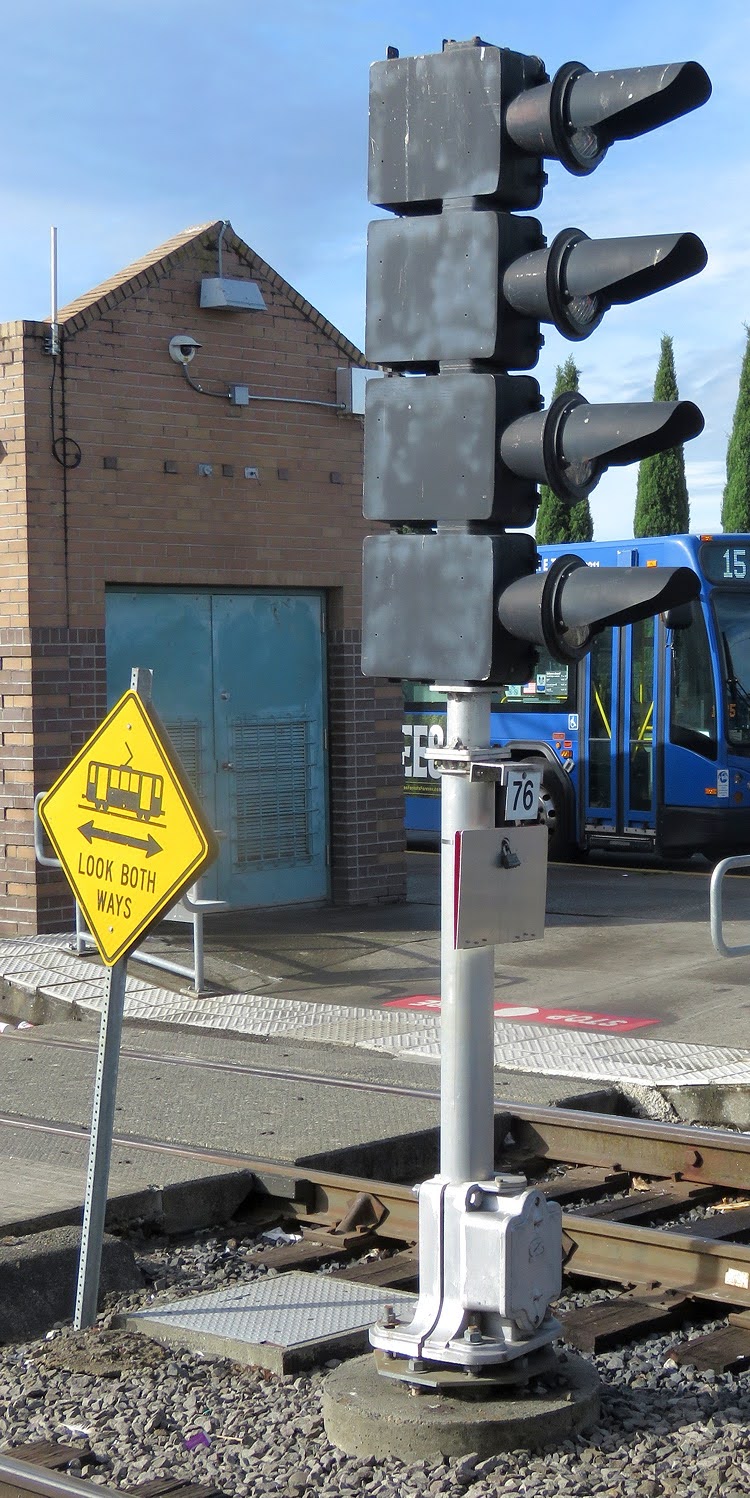Beginning operations in 1988 and seeing significant expansion in the 90's and 2000's, Portland's MAX light rail has the typical mix of downtown street running and dedicated suburban rights of way with operating speeds up to 55mph. The signaling of choice is single direction 3-aspect Automatic Block signaling using US&S transit type signal heads. There is little formal distinction between interlocking and intermediate signals each signal is the same in having a line-prefixed number plate.
One quirk of the system is the setup of having an ABS exit signal at each station and another ABS signal between stations. When a station platform s within a block, the signal will at best display yellow Approach so there is a distinct rhythm of exiting a platform on a Clear then entering the next on Approach. Intermediate signals on the main line away from stations are often of the high mast variety with earlier installations using US&S N type mono-block heads.
A key feature of the MAX train control system is the use of fixed inductive Automatic Train Stop (ATS). Unlike some other systems, MAX actually includes a bit of overlap to get trains stopped before they hit something. This is made possible by an LRV's enhanced braking performance necessary to handle the challenges of street running. Apparently MAX also has a few ATS based speed control timers that function independently of fixed signals, but are indicated by wayside signs.
Interlockings are limited to major junctions, yards and a few select crossovers. These are supplemented by hand operated temporary block stations. As I said before, both ABS and Interlocking signals are largely the same except for the possibility for route indications on the interlocking signals. This can range from the use of a single lamp in the "call-on" position, or separate heads, each governing a specific route. The wayside signals are supplemented by switch position indicators of the US&S ES-20 variety.
The route indications is where MAX really gets crazy using a full on IRT style route signaling system with one "head" representing a distinct route. The most extreme example of this is located at the Gateway Transportation Center where the Red, Blue and Green lines all diverge. This results in at least one signal with 5 route heads! Routes that lead into street running or other non-signaled areas present a lunar white indication. This is also used in situations with non-signaled reverse running on single direction ABS.
In a few places Unilens signals have been brought in to try and make the junction signals a bit less unwieldy.
Also note the use of that call-on marker to create a virtual head as seen here with this Diverging Restricting at West Steel Bridge Jct.
If one is wondering about approach type signals, MAX does indeed have a few with Y/G in its familiar role as Approach Diverging and a singular instance of G/G for Advance Approach Diverging available on the W556 signal at the Sunset Transportation Center.
As you can see MAX has a very unique signaling setup that is both simple in some ways and very complex in others. Unlike DART there appears to be no plan to shift to cab signaling so its signaling experience should be around for many years. I would also like to recommend the MAX FAQ website's signaling page that filled in a lot of the details and also dives into the street running signals that I don't tend to get into.














No comments:
Post a Comment